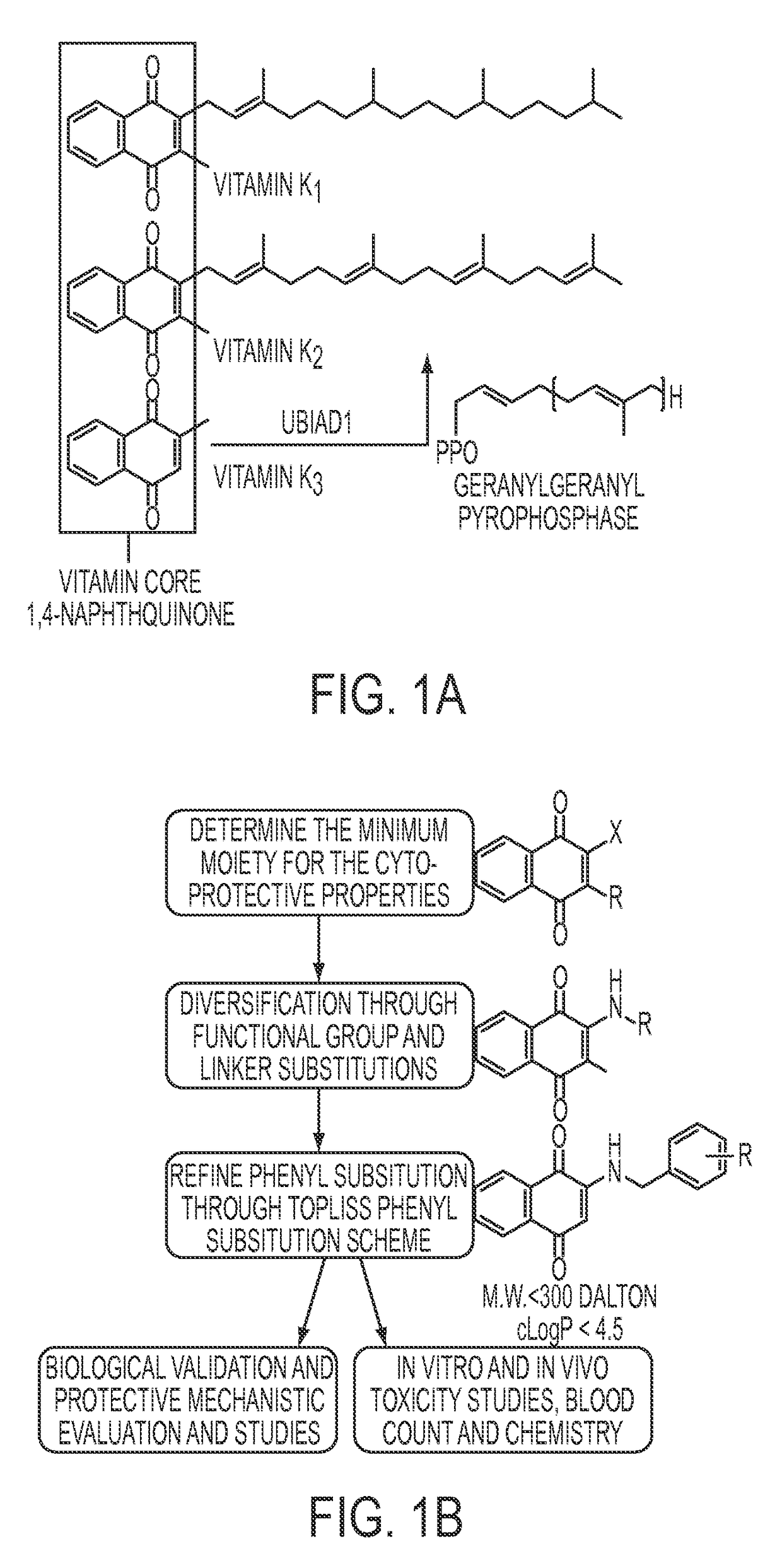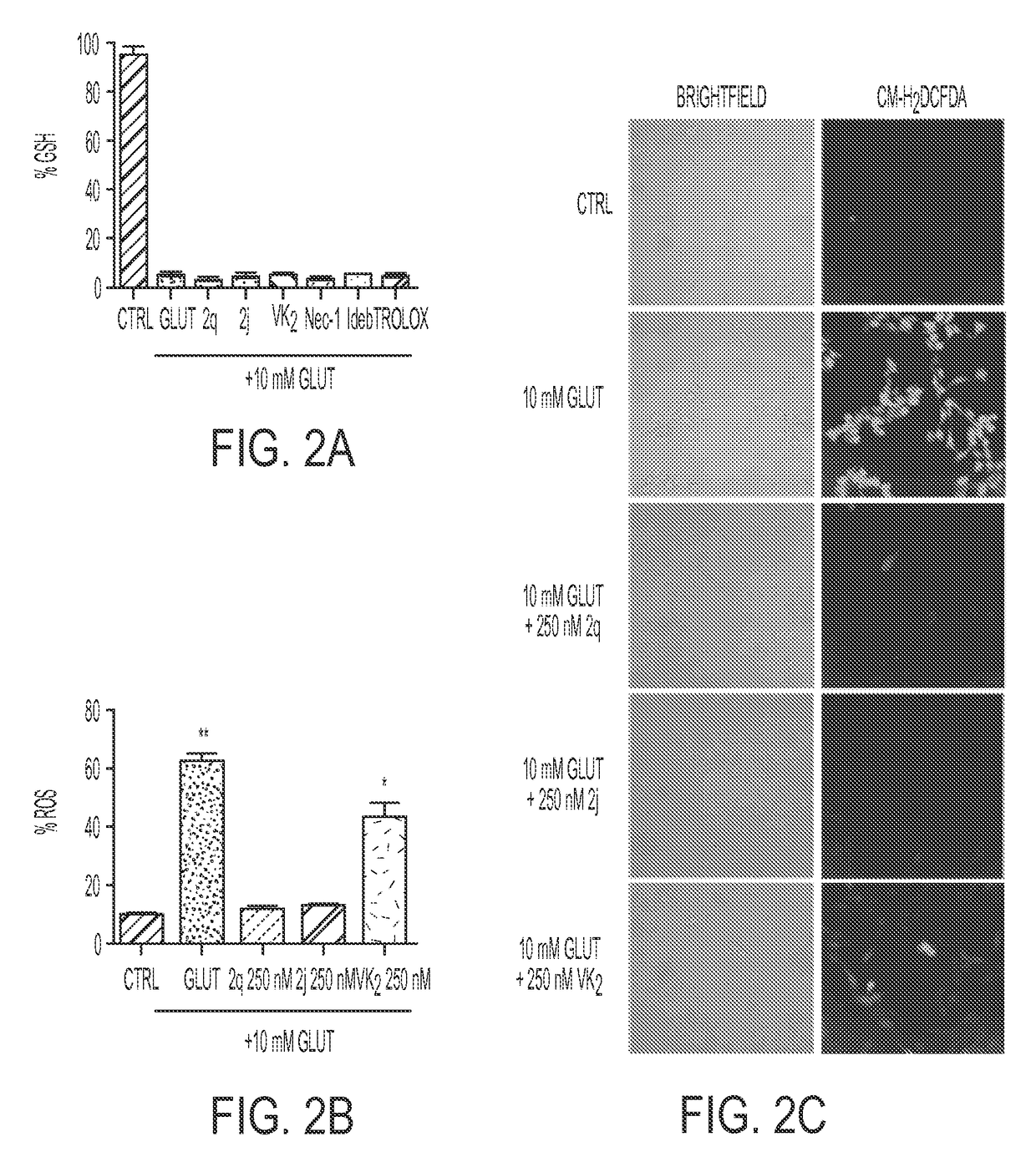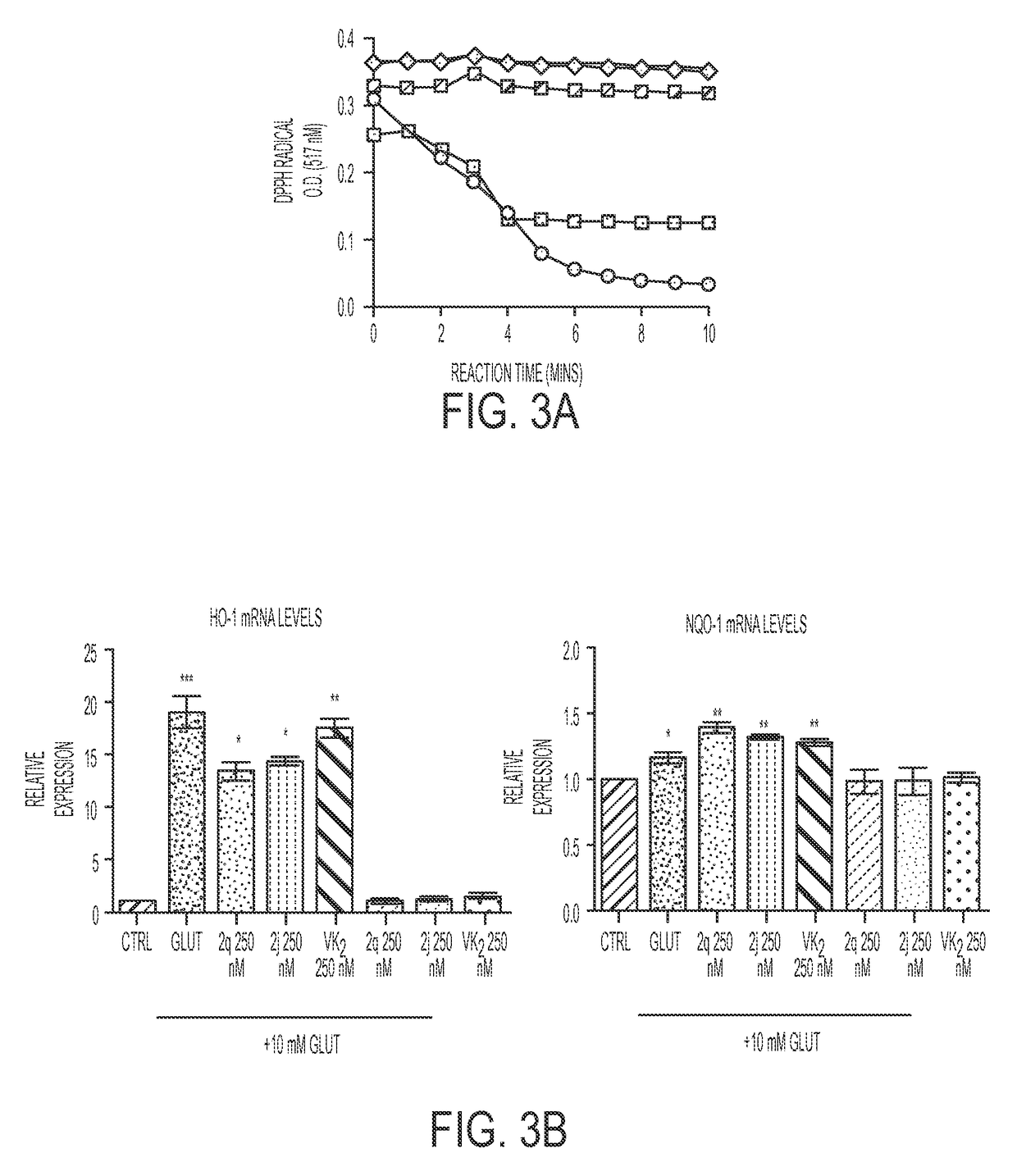Compositions and methods for treating neurological diseases or injury
a technology for mitochondrial diseases and compositions, applied in the field of compositions and methods for treating neurological or mitochondrial diseases or injuries, can solve the problems that vk/sub>2 does not effectively cross the blood-brain barrier, and achieves the effects of promoting mitochondrial defects, favorable drug characteristics and potency, and potent anti-epileptic activity
- Summary
- Abstract
- Description
- Claims
- Application Information
AI Technical Summary
Benefits of technology
Problems solved by technology
Method used
Image
Examples
example 1
Vitamin K Derivatives Yields Highly Potent Anti-Epileptic and Neuroprotective Agents
Experimental Section
Cell Culture
[0169]The HT22 neuronal cell line is a subclone of HT4, derived from the mouse hippocampus (Morimoto and Koshland, 1990). They do not express active ionotropic glutamate receptors and are not subject to excitotoxicity (Maher and Davis, 1996). HT22 cells were used. The cells were grown in Dulbecco's Modified Eagle's medium (DMEM / high glucose) supplemented with 10% fetal bovine serum (Hyclone) and 5 mL Antibiotic-Antimycotic (Amphotericin B, Penicillin, and Streptomycin; Invitrogen) at 37° C. in 5% CO2.
Cell Viability Assay
[0170]Cell viability was assessed by the ability of the viable cells to metabolize 3-(4,5-dimethylthiazol-2-yl)-5-(3-carboxymethoxyphenyl)-2(4-sulfophenyl)2-H-tetrazolium, inner salt (MTS), as described previously (Cory et al., 1991). The metabolism of tetrazolium salts is often used to measure cellular proliferation, but in the system used here, it has...
example 2
Zebrafish and Mouse Studies of Novel Compounds for Epilepsy
Methods
[0221]Chemicals
[0222]PTZ (Sigma P6500), 2-benzoylamino-1,4-naphthoquinone (NQN-1), suberoylanilide hydroxamic acid (SAHA), diphenyl acetic hydroxamic acid (dPAHA), Tubastatin A, VPA (Sigma P4543), 2-propylpentane hydroxamic acid (VPHA), and Vitamin K3 (VK3) were synthesized in the laboratory or obtained from commercially available sources (Inks et al., 2012). Vitamin K analogs were synthesized according to Josey et al. (Josey et al., 2013).
[0223]Zebrafish Studies
[0224]Zebrafish (AB strain) were obtained from the Zebrafish International Resource Center (supported by P40 RR012546 from NIH-NCRR). Zebrafish were maintained and crossed according to standard methods (Westerfield, 2000). Fertilized eggs were collected and placed in E3 embryo medium and positioned in an incubator set at 28.5° C. with a 14 / 10 h light / dark cycle (Kimmel et al., 1995). To determine the lethal dose of each compound, 96-well plates containing one ...
example 3
Synthesis of Compounds
Synthesis of 2-amino derivatives: Standard Procedure
[0271]To a solution of 2-bromo-1,4-naphthoquinone (283 mg, 1.2 mmol, 1.0 equiv) in abs EtOH (50 mL) was added an excess of the corresponding amine (2.4 mmol, 2 equiv, unless otherwise stated), and the reaction was stirred at room temperature and monitored by TLC. Most reactions were complete within 10 minutes. While some reactions precipitated pure product which was collected by vacuum filtration, others required chromatographic purification.
[0272]
2-amino-1,4-naphthoquinone (1d)
[0273]6.25 g NaN3 was dissolved in 15 mL H2O and acidified with 5 mL glacial acetic acid. The NaN3 solution was added to a solution of 1,4-naphthoquinone (5 g, 29 mmol) dissolved in 100 mL of THF / H2O (4:1) and stirred at room temperature. After 6 hrs, the reaction was concentrated in vacuo and redissolved in ethyl acetate. The resulting solution was washed with 1 M NaOH and saturated NaCl. Multiple extractions were required. The extract...
PUM
| Property | Measurement | Unit |
|---|---|---|
| mass | aaaaa | aaaaa |
| pH | aaaaa | aaaaa |
| volume | aaaaa | aaaaa |
Abstract
Description
Claims
Application Information
 Login to View More
Login to View More - R&D
- Intellectual Property
- Life Sciences
- Materials
- Tech Scout
- Unparalleled Data Quality
- Higher Quality Content
- 60% Fewer Hallucinations
Browse by: Latest US Patents, China's latest patents, Technical Efficacy Thesaurus, Application Domain, Technology Topic, Popular Technical Reports.
© 2025 PatSnap. All rights reserved.Legal|Privacy policy|Modern Slavery Act Transparency Statement|Sitemap|About US| Contact US: help@patsnap.com



